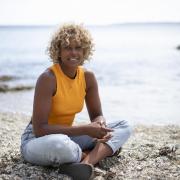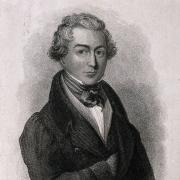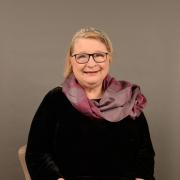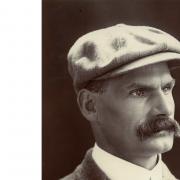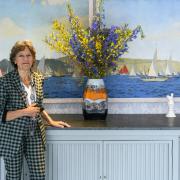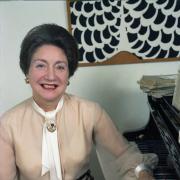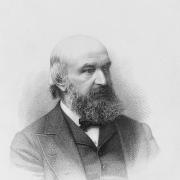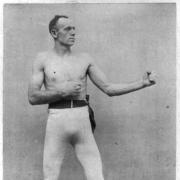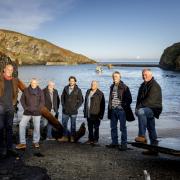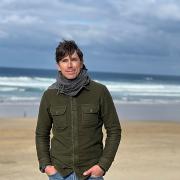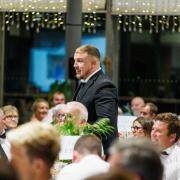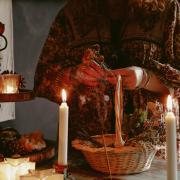Raynor Winn’s story has become the stuff of legend – and she’s back to share her adventures in her new book The Wild Silence

For most of us, Cornwall means beach holidays and local seafood, windswept vistas and sunshine – but for Raynor Winn it became a place of refuge and the inspiration behind a bestselling book.
The Salt Path became the surprise hit of 2018 - and The Sunday Times bestseller. Described variously as life-affirming, moving and a great travelogue, Raynor Winn records her and husband Moth’s experience of ending up homeless and finding refuge in their car along the South West Coast Path.
After being made homeless after 20 years and simultaneously facing her husband’s diagnosis with a degenerative and incurable disease, the couple packed up their lives and lived in their car along the South West Coast Path. “The sense of pain, loss and fear were almost overwhelming, as our lives fell apart and we faced our new reality,” she remembers. “But it was in that moment that we made a decision that saved us in every way possible.”
This month, her follow-up The Wild Silence is published and recounts their experiences since, which has included finding a permanent home in Cornwall.

“I wrote The Salt Path for Moth. As his illness began to effect his memory, I wanted to put our walk on the page, so that when he read it he would remember, he’d be right there on the path next to me, breathing the salt air, feeling the sun burn his skin and hearing the gulls calling in the twilight. As I started to write, I was simply charting our walk and the places we passed through, but there was something empty, almost shallow in the result,” she explains. “So I stopped and looked at it again. If he was to truly remember when he read the book then I knew I had to put everything in there. Every emotion we felt, every physical experience, and not just tell them but describe them in such a way that he would feel them as he read. I went back to the guidebook we had used on the path, followed the OS map that runs right through it, read the descriptions and put myself on the path in the wind and the wild Atlantic weather systems.
“When I came to write The Wild Silence, it began as just a sequel. But as I began to write I realised I was actually writing something much more than that and if I was to explain what came next I had to also talk about what came before, and how a fundamental connection to nature ran through everything I was trying to say.”
The Salt Path became a big hit, but one of the more surprising elements is that it led to a new home. Raynor and Moth were contacted by a reader who offered them a farm – in return he wanted them to look at re-wilding the farm.
“I thought home was the stone walls that surrounded me and I’d never feel the sense of home again. But as we walked that path, home became something far more fundamental. Home is what gives us a sense of safety and security and I came to realise that I didn’t need stone walls for that. For me that feeling came from my family, whether they were on the path next to me or spread across the county as our children were.”
But she also found home in the natural world surrounding them. “I’d grown up on a farm and always lived in very rural places. The natural environment had always been my safe place, the place I ran to when I needed to feel a sense of security, a sense of being in place. That strip of wilderness, often no more than a foot wide, became home. I still return to the path at every opportunity – it’s a reconnection.”
The reconnection is something she believes we all need. “If the current Covid-19 pandemic has taught us anything, it’s that we are as much a part of the natural world and as subject to its changes as the birds in the trees. Even in a flat in the city it’s been possible to put your head out of the window and hear the birds sing. It’s not that they’re singing because we aren’t there, they always sing, we just can’t hear them above the noise. That’s how I see the human connection to nature always there, always happening, we just don’t all see it or hear it.”
Their new home brings with it a mammoth task to re-wild the over farmed land.
“Not to re-wild in the sense of closing the field gate and letting nature take its course, but to find a way to restore the biodiversity to the silent landscape while still allowing it to be a traditional farm,” she explains. “I think of it not as re-wilding, but more as restorative farming.” The land has responded so quickly, after nearly two years of the farm being managed in this way the wildlife is already returning.
“What’s happening to the biodiversity of the farm seems to be almost a parallel to Moth’s health. When we were walking the coast path we were living wild, sleeping wild, existing in a more natural state, a natural way of being, and as we did so Moth’s health improved; something we’d been told couldn’t happen. What’s happening on the farm almost mirrors that taking away the heavy human input that has allowed the land to return to a more natural state, and rapidly, almost miraculously, the wildlife is returning.
“When we came to the end of our walk around the south west coast, that path through scrub and farmland, moorland and beaches had become home. It’s hard to explain how a strip of dirt, often no more than a foot wide, could be described as home, but if you imagine getting to your front door after a stressful busy day, when you’ve just done a long commute home and all you want to do is close that door behind yourself and breathe – that’s how the coast path feels to me. Even now, years later, as soon as my feet find that trail I feel a sense of calm, I’m where I belong and everything else fades away. Recently a local friend has inherited a boat and for the first time we’ve had the chance to explore the coastline at sea level – it’s been a revelation to find a myriad of coves and caves that are impossible to see from the path above. It’s confirmed the thought that no matter how much time you spend on the south west coast there will always be somewhere new to explore, you can never really know this piece of land completely.
“Years later, I’m sitting on my own sofa and watching rain run down the window and life couldn’t be more different. If only I could speak to that woman as she walked out of her home for the last time. I’d say be strong, put that rucksack on and just walk.” u The Wild Silence is on sale now.
THis feature first appeared in Cornwall Life magazine. View our latest subscription offers here





